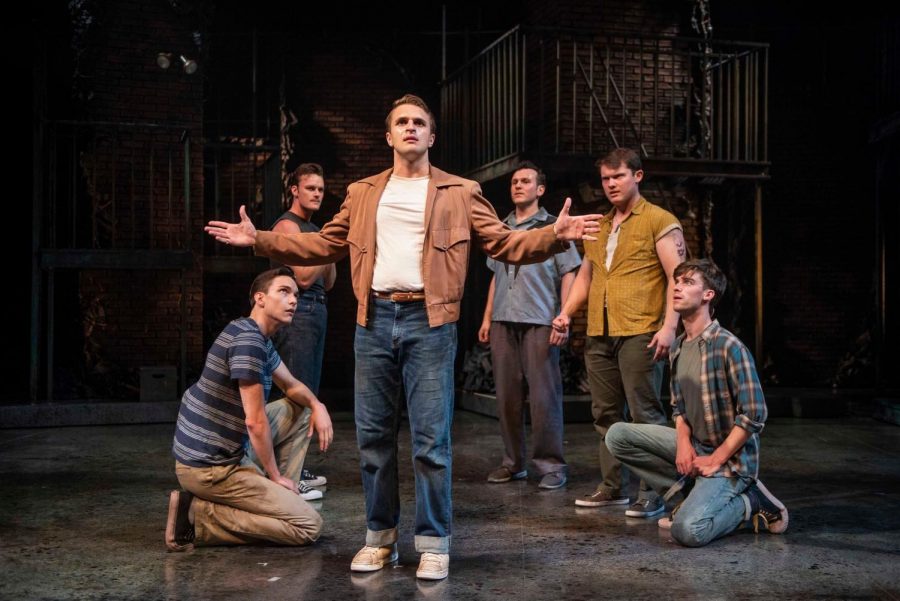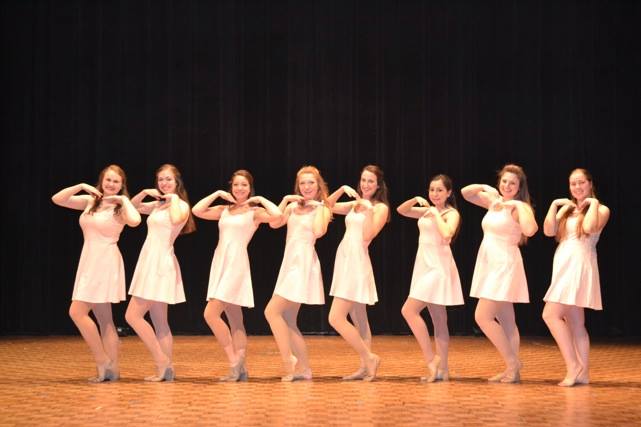A take on Shakespeare’s “Romeo and Juliet” that tells a tale of racial tensions between rival gangs — the Jets and the Sharks — in 1950s New York and the tragic whirlwind romance between star-crossed lovers from each side, “West Side Story” will run at the Quadracci Powerhouse stage at the Milwaukee Repertory Theater until Oct. 27.
When “West Side Story” first debuted in 1957, it was revolutionary. Prior to the musical’s release, musical theater was essentially considered “comedic escapism,” cast member Gilberto Saenz, who plays Indigo, a member of the Sharks, said during the pre-show discussion. “West Side Story” was radical, groundbreaking and politically-charged, Saenz explained. It gave actors and actresses of color a role on the Broadway stage unlike anything that had ever been done before.
Now decades later, “West Side Story” has come to be a theatrical classic, beloved by many generations, and is currently having a bit of a resurgence. Steven Spielberg’s film remake starring Ansel Elgort (Baby Driver, The Fault in Our Stars) and newcomer Rachel Zegler — alongside various Broadway stars — is set to come out in December 2020, while a modernized Broadway revival is set to open in early 2020. A handful of Broadway performers have booked gigs in both productions.
Among the cast of the Rep’s production is Nick Parrott, a 2019 Marquette graduate from the College of Communication. Parrott plays Snowboy, a member of the Jets.
He said themes of “West Side Story” relate to modern society, particularly impulsive decisions rooted in fear, causing the show to still strongly resonate with audiences more than 60 years since its conception.
For patrons that arrive at the Rep early, a pre-show discussion is led by a cast member each night. The opening night discussion was led by Saenz, who provided information on the history of “West Side Story” and on the Rep’s production specifically. The “West Side Story” production team includes artistic director Mark Clements, associate artist Dan Kazemi, scenic designer Todd Edward Ivins, costume designer Alexander B. Tecoma, lighting designer Yael Lubetzky, sound designers Danny Erdberg and Megan B. Henninger and music supervisor Jon Tanner.
With a book by Arthur Laurents, music by Leonard Bernstein, lyrics by Stephen Sondheim and original choreography by Jerome Robbins, “West Side Story” has for a long time been viewed as “untouchable” and “the perfect musical,” Saenz said.
But Saenz said the Rep sought to see how it could reimagine this classic story. One of the ways it accomplishes this is through dance.
The Rep hired Jon Rua to choreograph this production. Rua is a Broadway actor known for various roles, including Charles Lee in the original cast of “Hamilton.” He is also founder of the Grit collective in New York City.
The Grit, according to Rua’s website, is “a dance collective that unites storytelling, hip-hop styles and raw emotion for the stage and film, transcending the landscape of today’s dance world.” In other words, Saenz said, Rua’s dance style seeks to “trigger authentic human emotion” through creating a form of dance that encapsulates the “angst, joy, passion and love, confrontation and fighting” of the characters and additionally combines dance styles of the past and today.
“The process of working with Jon Rua is very unique. It is, I think, some of the most focused I’ve ever been in a room,” Saenz said. “There is intention behind everything.”
Working in his studio in New York, Rua said the show took him seven months to choreograph, from February to August. The Rep performers learned the show in 16-and-a-half days.
Because many of the cast members had never worked with Rua’s style of choreography, Saenz said some of them spent two weeks prior to learning the show in a dance intensive getting them adjusted to Rua’s style. Learning the choreography was “one long, magical, sweaty process,” Saenz said.
I unexpectedly ran into Rua after the show. He said it was a strange experience to sit back and watch his choreography on stage after spending months working on the specific movements.
“I had to create movement so strong that the only reason the movement existed was to represent what we were doing physically, what we were sharing emotionally,” Rua said. “And I felt like I did that in a way that was accessible to the demographic, was accessible to the heart of the time, was accessible to what those kids might have been able to do, and then again what they wished they could do.”
Rua’s choreography, with the intimacy of the Quadracci Powerhouse and outstanding acting, brought a realism to this production of “West Side Story” that I have not seen in other renditions of the classic musical.
The unique choreography is best exemplified in “The Dance at the Gym,” when the Sharks and the Jets engage in an intense dance battle just before the main characters Tony and Maria first meet. The dancing was breathtaking. Rua succeeded in keeping the heart of Robbins’s original choreography while breathing new life into the movements. As Saenz pointed out before the show, each gang’s movements have a different shape: The Jets’ movements are “angular” and “sharp” while the Sharks’ movements are more “curvy” and “unpredictable.” The contrast in styles further emphasizes the gangs’ clashing lives.
The intense dancing is halted when Tony and Maria lock eyes from across the room. Set and lighting design emphasize the emotional effect of moments like this throughout the show. The gymnasium’s backdrop of colorful party streamers falls away in dim lighting to starry lights strung around the stage, and Tony and Maria make their way toward each other through actors moving in slow motion. A similar dream-like dance and captivating use of lighting returns in Act Two during the “Ballet Sequence.”
The lead actors’ chemistry is powerful. Jeffrey Kringer’s Tony is simultaneously charismatic and able to hold his own among the Jets, yet childlike, young and (at times comedically) head-over-heels in love. Leisl Collazo’s Maria exemplifies naivety and innocence. Both provide powerful vocals and extraordinary acting to melt even the hardest heart in the audience.
Another phenomenal dynamic in the show is Collazo’s Maria and Courtney Arango’s Anita. Arango portrays the sassy, confident girlfriend of Bernardo and close friend and sister-figure to Maria. Arango is a true triple-threat performer, with powerful dancing, vocals and acting, and she provided a strong balance to Maria’s youthful innocence. The duo’s relationship is best exemplified in “A Boy Like That/I Have a Love.”
Other standout cast members included José-Luis Lopez, Jr. as Bernardo, Maria’s older brother and leader of the Sharks; Jacob Burns as Riff, Tony’s best friend and leader of the Jets; Hope Endrenyi as Anybodys, the street-savvy adolescent girl trying to establish her place as one of the Jets; and Jonathan Wainwright as Lt. Schrank, the racist, hardened police officer.
At risk of providing too many spoilers, the most powerful parts of this production lie in the details that make it stand out from other versions of “West Side Story”: a symbolic old woman at the start and finish of the show, whose meaning is only understood by the audience at the very end; a brief, solemn scene at the start of Act Two as the bodies of Riff and Bernardo are carried away juxtaposed with the start of “I Feel Pretty”; the dark tone of the comedic Act Two song “Gee, Officer Krupke”; and raw, unromanticized portrayals of death and grief. Every aspect of blocking, choreography, lighting and set design had distinct intention behind it. I was pulled into the world of “West Side Story” — and judging by the audible gasps and sniffles of nearby audience members, I wasn’t the only one.
Parrott said the Rep’s production aims to bring more reality to the classic “West Side Story” that the world already knows and to show the audience the tale’s “ugly truths.” In my opinion, the show more than accomplished this.
The best words I can use to describe the Rep’s production of “West Side Story” is raw and real. Like the title of Rua’s dance collective, it’s gritty.


